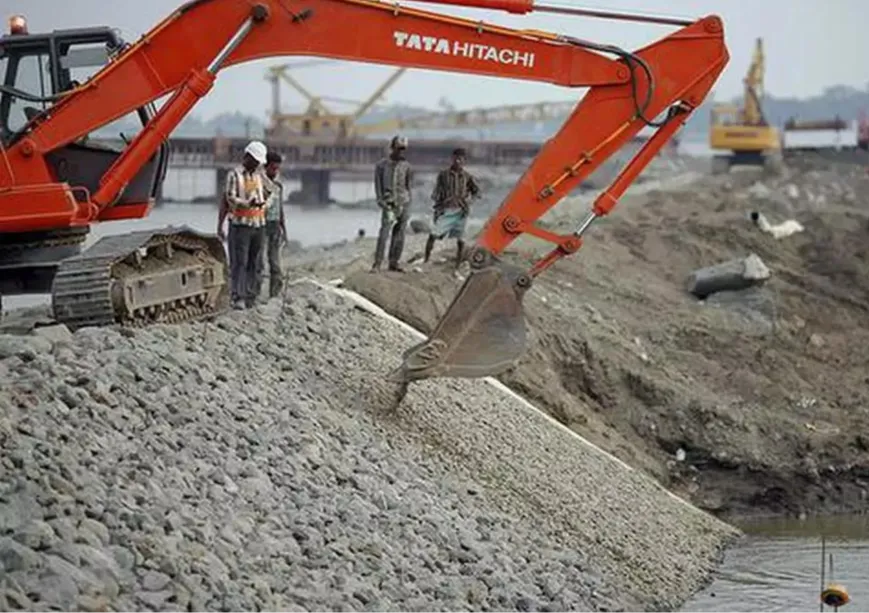
Three years after the military coup disrupted Myanmar's elected government, the junta's grip is finally loosening due to intense conflicts with ethnic insurgent groups under the Three Brotherhood Alliance. These battles, particularly the Arakan Army's (AA) control over significant portions of Rakhine and Chin States, threaten India's strategic interests, including the crucial US$484-million Kaladan Multi-modal Transit Transport Project (KMTTP). This project, which is vital for directly linking India's eastern coastline with its Northeastern states through Myanmar, aims to alleviate logistical challenges and enhance regional integration.
A cornerstone of India's Act East Policy, the KMTTP seeks to foster economic and strategic ties with Southeast Asia, offering an alternative to the Siliguri Corridor. It reflects India's dedication to promoting regional cooperation and connectivity. However, the escalating conflict in Myanmar endangers the project's completion and future operation and calls for India to reassess its approach in the region to protect its interests and ensure the success of this pivotal initiative amidst the crisis.
The status of the Kaladan project
The Kaladan project aims for swift completion despite missing several deadlines for its completion in 2014 and 2020, due to land compensation disputes, coordination failures, and challenging terrain. As of May 2023, Indian officials reported that nearly 98 percent of the road portion of the Kaladan project is finished. In June 2023, Myanmar's Commerce Minister, U. Aung Naing Oo, declared that the road linking Paletwa to Zorinpui in Mizoram was advancing rapidly.
AA targeted the Kaladan project in early 2019, when a joint operation by India and Myanmar's military aimed to repel AA forces was conducted.
Ircon International, responsible for the road's construction, initially planned to engage local contractors in Myanmar to enhance relations and minimise risks from insurgent group attacks on the project. Notably, AA targeted the Kaladan project in early 2019, when a joint operation by India and Myanmar's military aimed to repel AA forces was conducted. This led to the abduction of five Indians working at the site by AA. In mid-2020, there was another confrontation between AA and Junta forces near the project site.
To circumvent such risks, last year, Ircon finalised agreements with two Myanmar companies, Myanmar New Power Construction Limited and Su Htoo Sen, to finish different sections of the unfinished highway. However, these contracts specify a 40-month completion period for the road component, acknowledging possible delays due to environmental, political, and security challenges. Given the ongoing violence, military actions, and frequent assaults by armed factions, these factors significantly complicate forecasting a precise completion date for the project in the current volatile situation.
Importance of Arakan Army (AA)
Founded in April 2009 on the Myanmar-China border in Kachin State, the AA received support from the Kachin Independence Army (KIA). The group aims to establish an “Arakan Nation,” committing to national liberation and restoring sovereignty to Arakan's people.
Analysts have described the AA's conflict with the military forces from 2015 to 2020 as the country's most intense conflict in decades. The AA stands out as one of the most powerful armed groups, running a state-like structure and providing healthcare and education in its areas. Before the 2021 coup, the military regime and AA agreed to a ceasefire, using its famous divide-and-rule strategy to manage ethnic groups.
The AA and the military entered another truce in November 2022, facilitated by a Japanese envoy from the Nippon Foundation.
Following the coup in 2021, the AA initially seemed unclear about its role in the nationwide resistance. However, its strategy evolved to include competing for power with the Junta in Rakhine, collaborating with other ethnic forces against the Junta, supporting resistance forces, and establishing ties with the National Unity Government (NUG). The military's attacks on AA areas in 2022 ended the first ceasefire. The AA and the military entered another truce in November 2022, facilitated by a Japanese envoy from the Nippon Foundation. Despite this, the AA maintained its positions and warned that the ceasefire was temporary and any Junta action could reignite hostilities.
On 13 November 2023, as part of Operation 1027, the AA attacked Border Guard police stations, breaking the state ceasefire. As of February 2024, it now controls significant towns along the Kaladan River, such as Pauktaw, Kyauktaw, Mrauk-U, Minbya, and Myebon, and has seized positions in Maungdaw and Buthidaung. The group also took over the central police station in Ponnagyun, near the Kaladan River's mouth, adjacent to Sittwe. Instead of focusing on development efforts along the Kaladan River, the regime now struggles to defend the Rakhine State capital.
The situation in Sittwe resembles a battle zone with forces from both sides nearby, increasing the risk of conflict. Since January this year, the internet shutdowns, constant war, shortage of food, and inflation of prices have led to a mass exodus, with the remaining population bracing for more air raids and street conflicts. To assert control over Sittwe, the Junta demolished three bridges. Given the war-like situation, the ethnic armed group's takeover of Sittwe seems imminent.
The internet shutdowns, constant war, shortage of food, and inflation of prices have led to a mass exodus, with the remaining population bracing for more air raids and street conflicts.
An AA spokesperson assured a leading Indian news outlet that they would not harm the Kaladan project. The AA, along with the Myanmar National Democratic Alliance Army (MNDAA) and the Ta’ang National Liberation Army (TNLA), focuses on ending military governance in Myanmar, suggesting the Indian government might need to engage with the armed group.
Dilemma of the Indian government
Since 1990, India's policy toward Myanmar has emphasised engagement with the ruling powers that place a premium on security and political interests over promoting democratic principles in neighbouring nations. This policy has been exemplified by initiatives such as the recent visit of an Indian Army delegation to Myanmar, led by Lieutenant General Harjeet Singh Sahi, aiming to fortify bilateral relations, military cooperation, and joint endeavours for peace and development in border areas.
Amid the escalating situation in regions like Paletwa and Sittwe and given the AA’s recent declarations, India finds itself at a critical juncture, necessitating a re-evaluation and potential recalibration of its approach toward Myanmar. This imperative involves not only issuing advisories for Indian citizens to leave the region but also actively engaging with a broader spectrum of stakeholders.
The political stability of Myanmar is of paramount importance to India, particularly for the northeastern region and its connectivity projects, such as the KMTTP, since the project is not only a regional connectivity endeavour but a pivotal element of India's strategic ambitions to counter Chinese influence and enhance stability in its northeastern territories.
India may find itself needing to strike a careful balance between respecting Myanmar's sovereignty and pragmatically engaging with groups like the AA to protect its strategic interests.
The AA's dominance over critical areas along the Kaladan project route and its assurances to not disrupt the project highlights the complexities of engaging with non-state actors in conflict zones. India may find itself needing to strike a careful balance between respecting Myanmar's sovereignty and pragmatically engaging with groups like the AA to protect its strategic interests.
Furthermore, the AA's changing political stance, its interactions with the National Unity Government (NUG), and other ethnic armed groups indicate a shifting political landscape in Myanmar. This suggests that India's policy towards Myanmar must be flexible, accounting for the dynamic nature of alliances and power structures within the country.
Moreover, the introduction of a conscription law by the Myanmar Junta, compelling service from young individuals, underscores the regime's desperation in the face of civil unrest that has led to a significant number of people trying to avoid conscription, as seen in the spike in visa applications at the Thai embassy.
With over 45,000 Myanmar nationals seeking refuge in Indian border states, India's efforts to secure its borders and reassess the Free Movement Regime (FMR) reflect a response to Myanmar's instability, aiming to protect national security. However, the challenge of managing the refugee influx remains, suggesting that providing humanitarian aid could be a vital strategy for supporting the Myanmar populace, which is central to the country's future trajectory towards democratic governance. India's policy towards Myanmar should be adaptable, considering the fluid nature of alliances and power dynamics.
Sreeparna Banerjee is a Junior Fellow at the Observer Research Foundation
The views expressed above belong to the author(s). ORF research and analyses now available on Telegram! Click here to access our curated content — blogs, longforms and interviews.




 PREV
PREV


